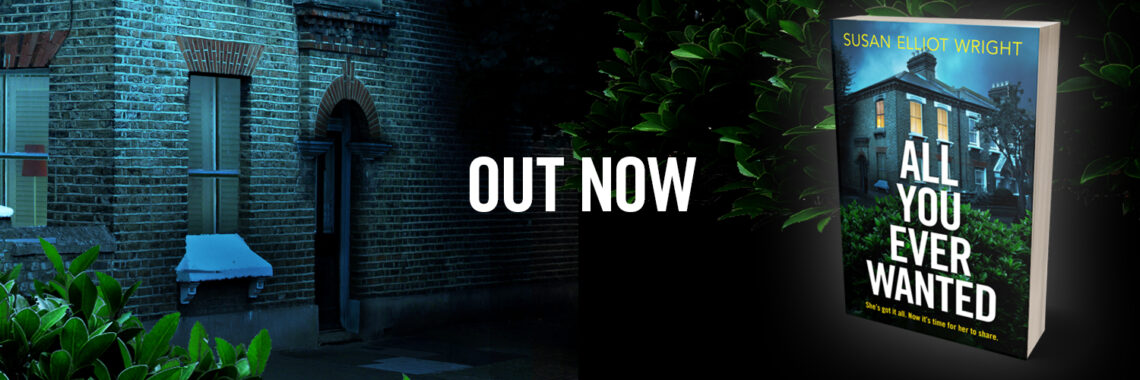Category: character
Writing a first draft
And to access a list of recipes and book reviews on this blog, go to: recipes and book reviews and scroll down the page (past the writing bits)
Review of Tideline by Penny Hancock
Newsflash! The cover for my debut novel, The Things We Never Said, is now on the Home and Fiction pages of my website
For more about me and my work, visit www.susanelliotwright.co.uk
And to access a list of recipes and book reviews on this blog, go to: recipes and book reviews
Review of God’s Own Country, by Ross Raisin
And to access a list of recipes and book reviews on this blog, go to: recipes and book reviews
7 ways to justify procrastination
For more about me and my work, visit www.susanelliotwright.co.uk
And to access a list of recipes and book reviews on this blog, go to: recipes and book reviews
A real Character (or in this case, me!)
When your characters speak
I have a book deal!
This week, I have some rather wonderful news: I’m delighted to announce that my debut novel, The Things You Didn’t Know, is to be published by Simon & Schuster in 2013 as part of a two-book deal. I am thrilled to bits about this, as I’m sure you can imagine! So my message this week is, don’t give up! This novel has had long journey, and as the publishing climate has become more and more difficult, I began to wonder if my beloved characters would ever see the light of day.
After completing the novel, then titled Footsteps, to the best of my ability, I began to seek representation. I was lucky enough to receive an offer very quickly, although I was unable to take it up because the agent concerned was about to go on maternity leave. However, this gave me the confidence to keep approaching agents. I then received a number of rejections and began to wonder if the first offer had been a fluke. But then I received two offers of representation in the same week!
I met both agents, and chose Kate Shaw (then of Alexander Aitken, but now of The Viney Agency) because she had ideas for the book and suggested revisions – including a major structural change – that I just knew were good.
So, I spent around seven or eight months doing these revisions, and after a bit more tinkering, we felt the novel was ready to go, and it was sent out to several major publishers. It didn’t sell on that occasion, but came very close indeed, with three of the editors saying that they’d been very tempted, four wanting to see my next novel and one – oh joy – actually taking my agent and me out to lunch. This particular editor had reservations about one of the characters, and so I set to work on more revisions, more subtle this time, perhaps rather too subtle, as it would later transpire, because Kate felt I hadn’t quite gone far enough with the changes. We talked about sending the book out with the new title to the smaller publishers, but then decided to put it aside for a while and concentrate on a second book.
No reading bit, this week, I’m afraid. We’ve been busy and preoccupied with a family bereavement – my father-in-law died rather suddenly earlier in the week following a fall just a week before. This has obviously had a huge impact on the family, and things are in a state of flux at the moment. It’s very strange to have had the good news about the book deal in the same week as this very sad news about my father-in-law.
No food bit either for the same reason (see above). However, watch this space for some gorgeous, vegan-friendly Christmas recipes in the next few days – it’ll be a bumper crop: a wonderful nut roast, some apricot and walnut stuffing and the nicest and most festive red cabbage with apple you have ever tasted! Trust me!
For more about me and my work, check out my website: https://susanelliotwright.co.uk
NaNoNonsense – the aftermath!
NaNoWriMo Week 3
The Writing Bit
Sunday: Soya mince with peppers, mushrooms and new potatoes, cooked in a sauce made from tomatoes, red wine, garlic and herbs.
Monday: Vegan ‘meatballs’ with spaghetti and spicy tomato sauce.
Tuesday: Mixed bean cassoulet.
Wednesday: Creamy mushroom tagliatelle.
Thursday: Curry night: aubergine and chick pea, sag aloo, aloo gobi, chapatis.
Friday: Tapas: (I’m quite proud of this one!) vegan ‘paella’, patatas bravas, garlic mushrooms, aubergines with garlic and herbs.



